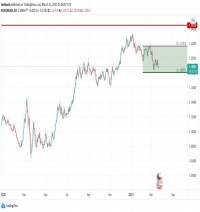|
Post-Crisis Asset Allocation With the painful experience of 2008 in mind, institutional investors seek ways to build portfolios that will stand up better to potential market stresses. Many are looking for alternatives that will help protect their portfolio in times of turbulence. “Traditional asset allocation models did not properly account for the actual risks embedded in portfolios,” says a recent report from Morgan Stanley. “These risks include liquidity shocks, correlations that change over time and uncertain cash flow requirements.” Investors have started to question the validity of traditional asset allocation models, according to the Morgan Stanley report. Due diligence questionnaires are increasingly reflecting investors' new priorities. The following discussion, an edited and abridged version of material from Welton Investment Corp., highlights the critical issues and argues that global macro and managed futures fit the evolving asset allocation paradigm. Carmel, California-based Welton specializes in managed futures and global macro strategies. The firm's flagship Global Directional Portfolio, a diversified collection of strategies, had about $500 million in assets as of year-end 2008 and is a component of the FTSE Hedge CTA/Managed Futures Index. The program has compounded annualized returns of over 17% since inception in June 2004 through 2008. For an in-depth interview with founder Dr. Patrick Welton, please see the June 2nd, 2009, issue of Opalesque Futures Intelligence. A 2008 internet survey of institutions and financial advisors examined the perception and use of alternative investments. Participants in the survey, sponsored by Morningstar and Barron's, identified five basic asset allocation criteria for alternatives (Table 1). TABLE 1
Qualitative Traits:
----------------------------------------------------------------------- This list is elegant in its simplicity. It provides welcome clarity for investors revisiting their asset allocation strategy. We believe this is a robust framework, which if put into practice would have curbed many of the problems that emerged in 2008, ranging from counterparty risk, lack of transparency, excessive leverage, over-exposure to equity Beta and fraud as highlighted by the Bernard Madoff scandal. The questions in Table 2 apply these criteria. It is remarkable how well managed futures fits the bill. Take the central question of which alternatives provide the most reliable diversification. Managed futures is one of the most diversifying strategies, with low correlation not only to major markets but also most hedge fund strategies. (See Opalesque Futures Intelligence February 10, 2009, p. 6.) Global macro is another highly diversifying investment. TABLE 2 1. Absolute return orientation 2. Diversification 3. Liquidity 4. Transparency 5. Regulation ----------------------------------------------------------------------------------------------- Moreover, futures are traded in regulated markets and easily marked to market. It is fair to say that managed futures has a long history of satisfying the investment criteria that investors use today when evaluating alternatives. There can be no question that the strategy warrants a permanent allocation within a well diversified institutional portfolio. Appropriate allocation size will vary by investor, but as investors re-emphasize diversification, estimates like more than 25% of assets are mentioned. Surprisingly, however, in recent years investors have allocated heavily to less diversifying alternatives, in particular long/short equity and event-driven strategies. These correlate strongly with the stock market. As of 2008, equity hedge and event driven together accounted for half of all hedge fund assets (based on data from HFR and BarclayHedge). By comparison, only 28% of industry assets were in the two strategies that proven diversifiers, global macro and managed futures. The predominance of less diversifying strategies in portfolios led to unexpected correlation and large losses in 2008. But equity-correlated strategies were not always so dominant in alternatives portfolios. Historically, investors allocated much more to macro and managed futures, with over 52% of assets in these two strategies in 1990. That share declined over time. Now, with investors' priorities changing, asset allocation targets for macro and managed futures should increase. That would be a return to the earlier pattern. |
|
This article was published in Opalesque Futures Intelligence.
|





 RSS
RSS












